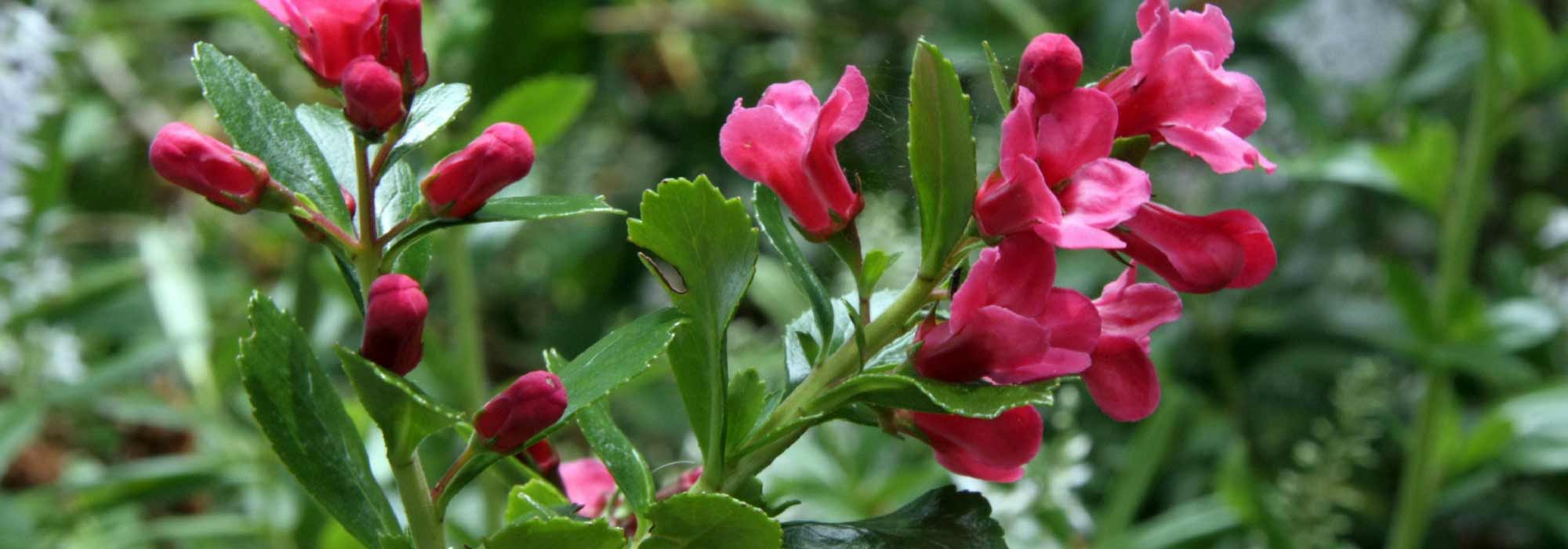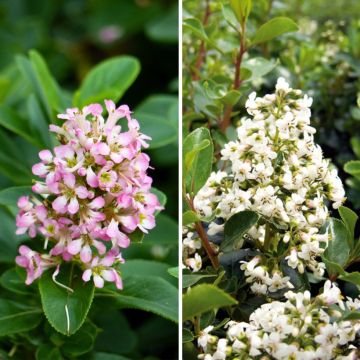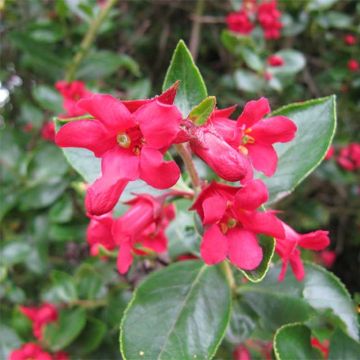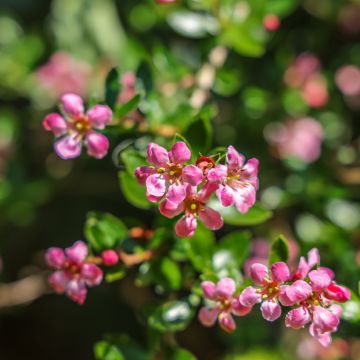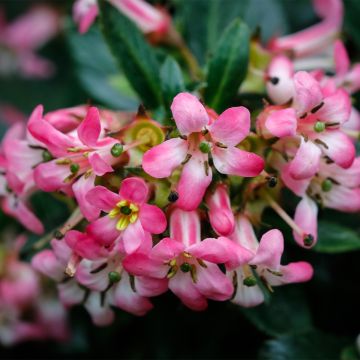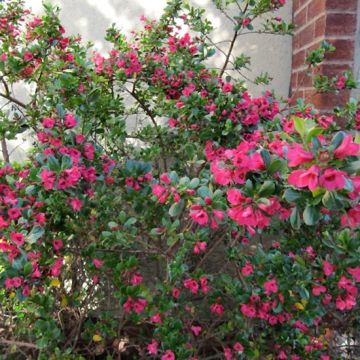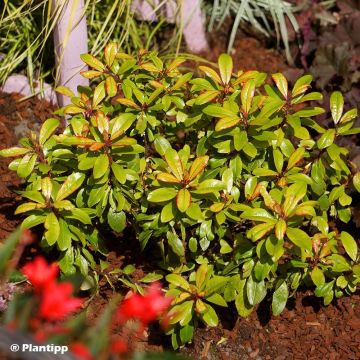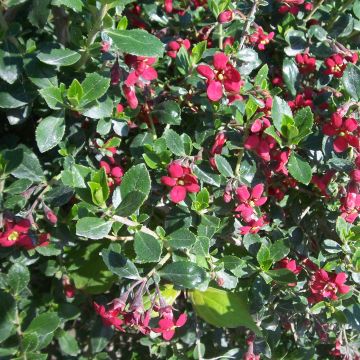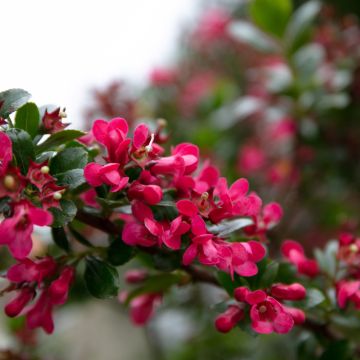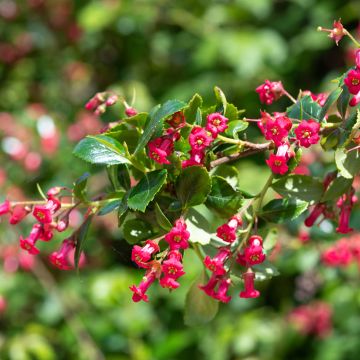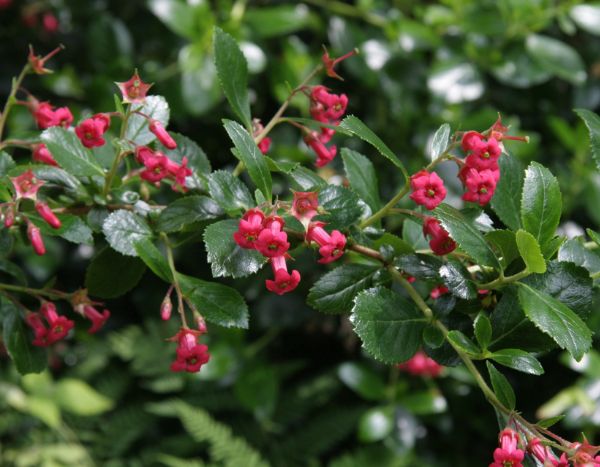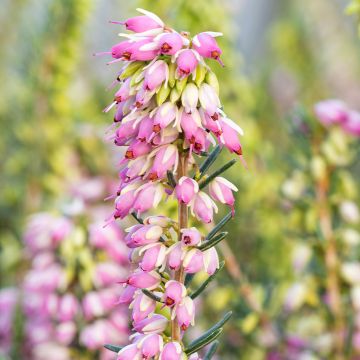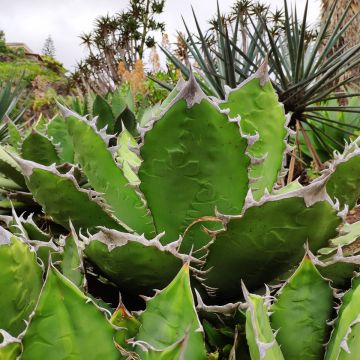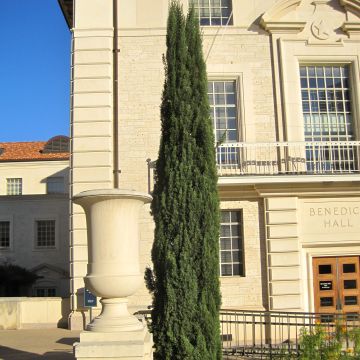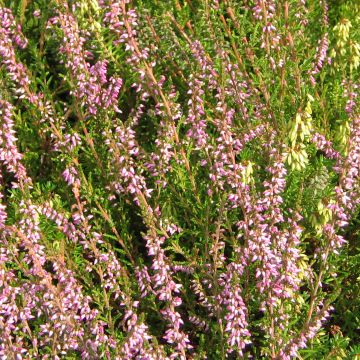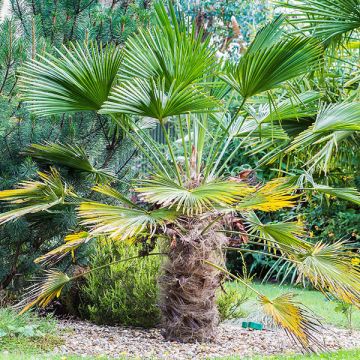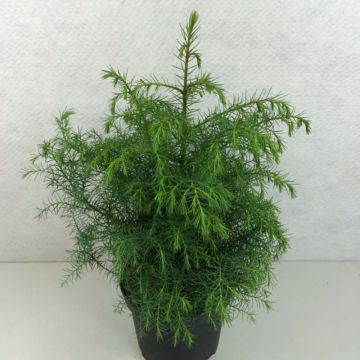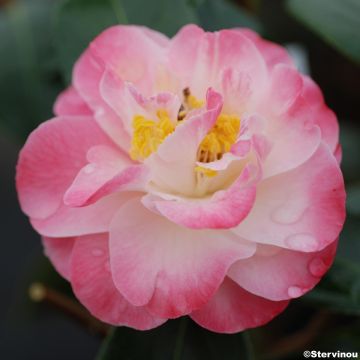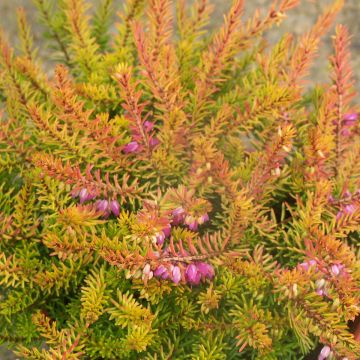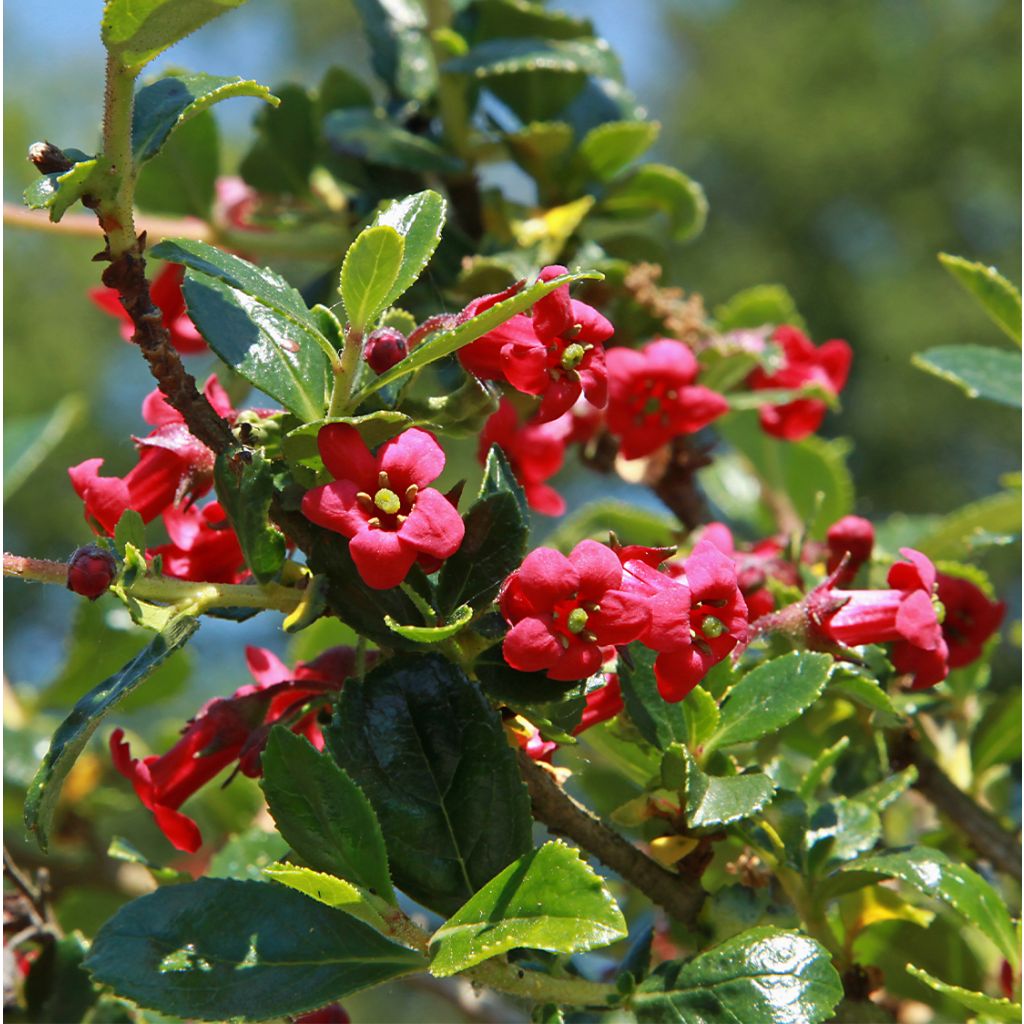

Escallonia compacta Coccinea
Escallonia Compacta Coccinea - Redclaws
Escallonia compacta Coccinea
Redcalws, Compact Escallonia
Special offer!
Receive a €20 voucher for any order over €90 (excluding delivery costs, credit notes, and plastic-free options)!
1- Add your favorite plants to your cart.
2- Once you have reached €90, confirm your order (you can even choose the delivery date!).
3- As soon as your order is shipped, you will receive an email containing your voucher code, valid for 3 months (90 days).
Your voucher is unique and can only be used once, for any order with a minimum value of €20, excluding delivery costs.
Can be combined with other current offers, non-divisible and non-refundable.
Home or relay delivery (depending on size and destination)
Schedule delivery date,
and select date in basket
This plant carries a 24 months recovery warranty
More information
We guarantee the quality of our plants for a full growing cycle, and will replace at our expense any plant that fails to recover under normal climatic and planting conditions.
Does this plant fit my garden?
Set up your Plantfit profile →
Description
Escallonia Compacta Coccinea is a vigorous evergreen bush, with a particularly compact and upright habit and intense bright red flowering. Essential in mild climates and coastal areas, whether planted in the ground or containers, this variety will not exceed 1.20m high with an average spread of 80cm. Adorned with beautiful glossy green foliage, this excellent flowering hedge plant is beautiful all year round. It offers a long summer flowering period with small bright red flowers clustered at the tips of the branches. Like many escallonias, it loves the sun and tolerates shade in hot climates, sea spray, limestone soils, and summer drought once established. This beautiful variety only dislikes severe frost. Plant Escallonia if your climate suits it, these rewarding shrubs grow quickly, are floriferous, often fragrant, and very undemanding!
Escallonia Compacta Coccinea belongs to the Escalloniaceae family, shrubs native to temperate areas of South America and Chile. In the wild they grow among the scrub covering hillsides or on exposed coastal areas.
The 'Coccinea' variety forms a branching, upright shrub with fairly rapid growth, reaching an average height of 1.20m at maturity with a spread of only 80cm. Its persistent, leathery, alternate, ovate leaves with toothed edges are light green when they emerge and become darker over time. They are densely arranged towards the ends of the branches. Flowering takes place for about two months between June and August, earlier or later depending on the climate, sometimes as early as May in hot climates. At the end of each branch, a 3 to 10cm cluster is formed of small five-petaled tubular bell-shaped flowers in intense red, enclosed at the base in a red and green calyx.
Escallonias are a great alternative to Weigela in mild climates, coastal areas, and in dry gardens. 'Coccinea' is an excellent contrasting and enhancing shrub for white or red roses and only dislikes icy winds and harsh winters. It is well-known to gardeners in Brittany, Ireland, and England and also thrives in Mediterranean climates, after careful planting and regular watering for the first two or three years. It tolerates heat, dry summers once established, and limestone soils, and still flowers even in scorching or shaded situations. It is essential in coastal gardens where its flowers, just like that of Olearia, brighten up the grey foliage of Atriplex, Bupleurum fruticosum, or Correa alba rosea for example. In a large bed, it can be combined with cistus, Polygala, Grevillea (in neutral to acidic soil), or spring-flowering shrubs such as lilacs, brooms, Kolkwitzia amabilis, or buddleias.
Escallonia Compacta Coccinea - Redclaws in pictures
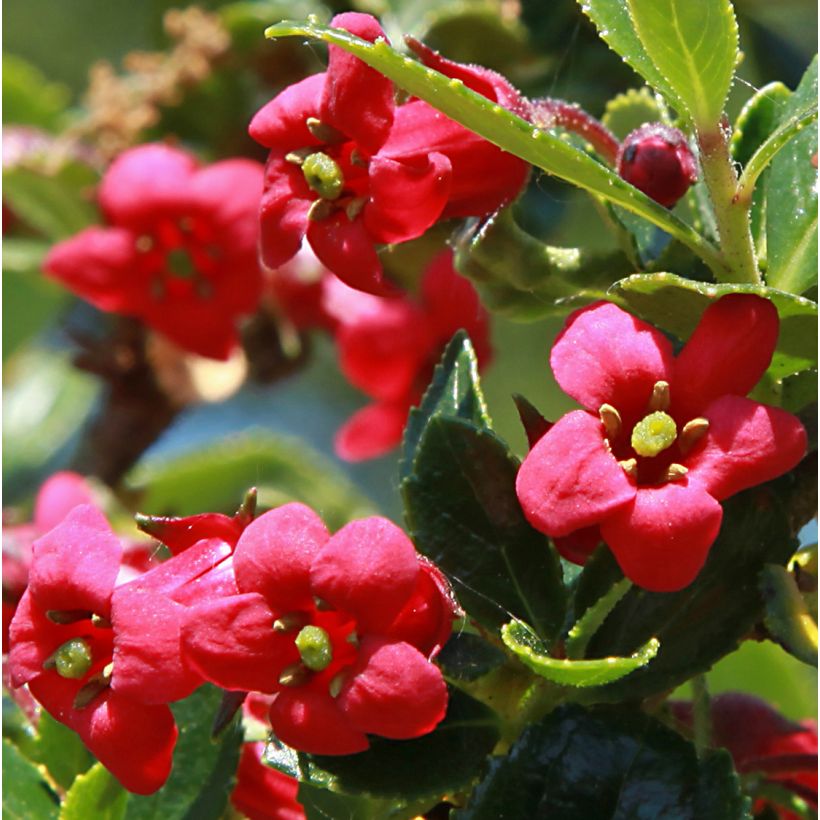

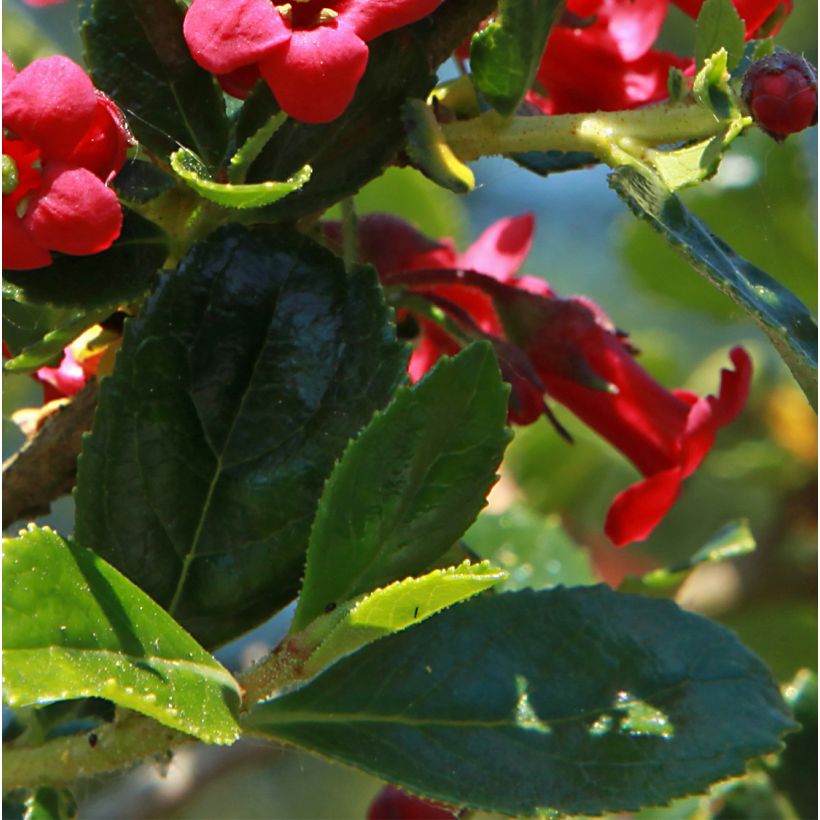

Plant habit
Flowering
Foliage
Botanical data
Escallonia
compacta
Coccinea
Escalloniaceae
Redcalws, Compact Escallonia
Cultivar or hybrid
Other Escallonias
View all →Planting and care
The 'Coccinea' compact Escallonia is best planted in spring or autumn in mild climates. It requires well-drained, light, moist, slightly acidic, neutral, or even limestone soil, in a sheltered and warm location. It blooms more abundantly in the sun but tolerates shaded exposures well. Once well established, it requires no watering in summer, even in dry climates. It can withstand sea spray but not cold winter winds. You can apply rose fertiliser in spring if your soil is very poor. Prune to balance the silhouette in February and September. It dislikes heavy soils and stagnant moisture, especially in winter. If the soil is too heavy and limestone, it may suffer from chlorosis; if this is the case, apply a dose of sequestrine every year in spring. Prune to a third of its height in the first few years after planting so that the bush acquires a dense and compact habit. You can also prune it into a ball shape. In regions on the edge of the hardiness zone, plant it in a location protected from prevailing winds, south-facing against a wall or west-facing in the back of a bed or a hedge, and mulch the base in winter. If your Escallonia has frozen in winter, it is likely to regrow from the base in spring. Elsewhere, you can grow it in a container to overwinter in a bright location, protected from severe frost, remembering to water it occasionally.
Planting period
Intended location
Care
Planting & care advice
This item has not been reviewed yet - be the first to leave a review about it.
Similar products
Haven't found what you were looking for?
Hardiness is the lowest winter temperature a plant can endure without suffering serious damage or even dying. However, hardiness is affected by location (a sheltered area, such as a patio), protection (winter cover) and soil type (hardiness is improved by well-drained soil).

Photo Sharing Terms & Conditions
In order to encourage gardeners to interact and share their experiences, Promesse de fleurs offers various media enabling content to be uploaded onto its Site - in particular via the ‘Photo sharing’ module.
The User agrees to refrain from:
- Posting any content that is illegal, prejudicial, insulting, racist, inciteful to hatred, revisionist, contrary to public decency, that infringes on privacy or on the privacy rights of third parties, in particular the publicity rights of persons and goods, intellectual property rights, or the right to privacy.
- Submitting content on behalf of a third party;
- Impersonate the identity of a third party and/or publish any personal information about a third party;
In general, the User undertakes to refrain from any unethical behaviour.
All Content (in particular text, comments, files, images, photos, videos, creative works, etc.), which may be subject to property or intellectual property rights, image or other private rights, shall remain the property of the User, subject to the limited rights granted by the terms of the licence granted by Promesse de fleurs as stated below. Users are at liberty to publish or not to publish such Content on the Site, notably via the ‘Photo Sharing’ facility, and accept that this Content shall be made public and freely accessible, notably on the Internet.
Users further acknowledge, undertake to have ,and guarantee that they hold all necessary rights and permissions to publish such material on the Site, in particular with regard to the legislation in force pertaining to any privacy, property, intellectual property, image, or contractual rights, or rights of any other nature. By publishing such Content on the Site, Users acknowledge accepting full liability as publishers of the Content within the meaning of the law, and grant Promesse de fleurs, free of charge, an inclusive, worldwide licence for the said Content for the entire duration of its publication, including all reproduction, representation, up/downloading, displaying, performing, transmission, and storage rights.
Users also grant permission for their name to be linked to the Content and accept that this link may not always be made available.
By engaging in posting material, Users consent to their Content becoming automatically accessible on the Internet, in particular on other sites and/or blogs and/or web pages of the Promesse de fleurs site, including in particular social pages and the Promesse de fleurs catalogue.
Users may secure the removal of entrusted content free of charge by issuing a simple request via our contact form.
The flowering period indicated on our website applies to countries and regions located in USDA zone 8 (France, the United Kingdom, Ireland, the Netherlands, etc.)
It will vary according to where you live:
- In zones 9 to 10 (Italy, Spain, Greece, etc.), flowering will occur about 2 to 4 weeks earlier.
- In zones 6 to 7 (Germany, Poland, Slovenia, and lower mountainous regions), flowering will be delayed by 2 to 3 weeks.
- In zone 5 (Central Europe, Scandinavia), blooming will be delayed by 3 to 5 weeks.
In temperate climates, pruning of spring-flowering shrubs (forsythia, spireas, etc.) should be done just after flowering.
Pruning of summer-flowering shrubs (Indian Lilac, Perovskia, etc.) can be done in winter or spring.
In cold regions as well as with frost-sensitive plants, avoid pruning too early when severe frosts may still occur.
The planting period indicated on our website applies to countries and regions located in USDA zone 8 (France, United Kingdom, Ireland, Netherlands).
It will vary according to where you live:
- In Mediterranean zones (Marseille, Madrid, Milan, etc.), autumn and winter are the best planting periods.
- In continental zones (Strasbourg, Munich, Vienna, etc.), delay planting by 2 to 3 weeks in spring and bring it forward by 2 to 4 weeks in autumn.
- In mountainous regions (the Alps, Pyrenees, Carpathians, etc.), it is best to plant in late spring (May-June) or late summer (August-September).
The harvesting period indicated on our website applies to countries and regions in USDA zone 8 (France, England, Ireland, the Netherlands).
In colder areas (Scandinavia, Poland, Austria...) fruit and vegetable harvests are likely to be delayed by 3-4 weeks.
In warmer areas (Italy, Spain, Greece, etc.), harvesting will probably take place earlier, depending on weather conditions.
The sowing periods indicated on our website apply to countries and regions within USDA Zone 8 (France, UK, Ireland, Netherlands).
In colder areas (Scandinavia, Poland, Austria...), delay any outdoor sowing by 3-4 weeks, or sow under glass.
In warmer climes (Italy, Spain, Greece, etc.), bring outdoor sowing forward by a few weeks.






























